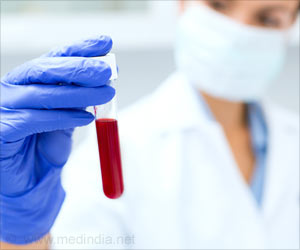New research shows that there is a more than four-fold increase in the incidence of breast cancer in women with neurofibromatosis-1 (NF1).

In a small study of 126 women with NF1 at the Johns Hopkins Comprehensive Neurofibromatosis Center, the Johns Hopkins scientists identified four cases of breast cancer. The study showed a four-fold increased risk for breast cancer in women with NF1 compared to the general population of women under the age of 50. NF1 is characterized by the uncontrolled growth of mostly non-cancerous tumors along the body's nerves, often resulting in pain and disfigurement.
Beyond their implications for breast cancer screening guidelines for women with NF1, the findings may also shed light on the origins and nature of breast cancer in those without the syndrome, the researchers say, because other recent studies suggest that some women without neurofibromatosis-1 had breast cancers fueled primarily by an NF1 mutation. A recent study, for example, described in the journal Nature, estimated that 3 percent of all breast cancers in the general population are caused by NF1 mutations that arise spontaneously.
"When we study rare populations intensively, we learn things that also may be factors in very common diseases, like breast cancer," says Jaishri Blakeley, M.D., an assistant professor of neurology, neurosurgery and oncology at the Johns Hopkins University School of Medicine, and leader of the new study described online in the American Journal of Medical Genetics. "What we learn from this population will help us learn more about the subtleties of different types of breast cancers."
The major implication of their study, Blakeley says, is the need for medical specialty societies to develop guidelines recognizing NF1 patients under the age of 50 as a group at increased risk for breast cancer. Guidelines developed by medical societies would change clinical practice and, just as importantly, encourage insurance companies to pay for potentially lifesaving screening in younger women with the debilitating disease, the researchers add.
"There are guidelines for how to care for women at high risk for breast cancer because of a family history of the disease, or because they have the BRCA genetic mutations, but there are no guidelines for women with NF1," Blakeley says. "Women with NF1 haven't even been on the radar as a high-risk population. Now that we increasingly understand the risk, we have to make sure doctors are talking to their patients about the benefits and risks of early screening."
Advertisement
The normal Nf1 gene is one of a number of so-called tumor suppressor genes. Roughly one in 3,000 Americans (equal numbers of males and females) has a mutated copy that no longer functions properly and allows tumors to grow unchecked. About half of people with NF1 inherit an Nf1 gene mutation from a parent, and the other half are the first in their family to have an Nf1 gene mutation.
Advertisement
Source-Eurekalert















